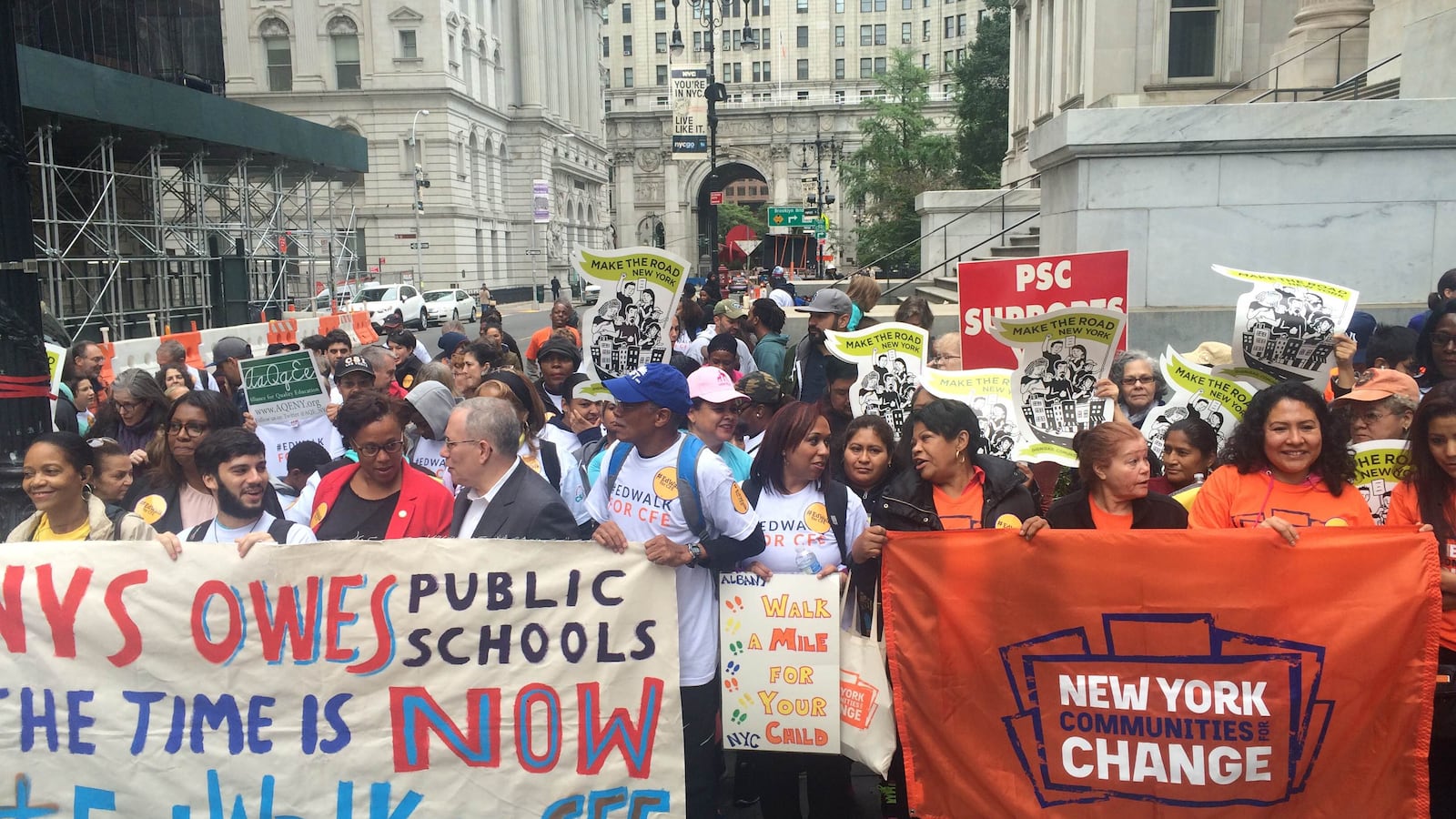Education advocates have insisted the state has skimped on funding its schools. But New York State already has the highest per-student funding rate of any in the country — could moving that number up make a difference?
The answer is yes, according to a new study of over 600 districts across the state — the first of its kind to look at the recent effects of increased school spending in New York. The researchers found that increased per-student spending led to higher math and reading scores on state tests.
The findings add new evidence to a heated debate that has raged for decades about whether the state’s schools are adequately funded, an issue that actress Cynthia Nixon has made a pillar of her underdog campaign against Gov. Andrew Cuomo.
Set to be published in the peer-reviewed Economics of Education Review, the study takes advantage of a provision in the state’s funding formula known as “Save Harmless” that allows districts to maintain their funding even if they lose students. Since many districts across the state have suffered enrollment declines, they have boosted the amount of money they spend per student. (New York City was excluded from the study because of its unusually large size and technical issues matching its data with other districts.)
By comparing districts that lost students — resulting in more money spent per remaining student — with those that saw smaller declines, the researchers were able to isolate the effect of the funding increases. Using data from 2007 through 2015, they found that a $1,000 in increase per student corresponded with an increase of one-seventh of a grade level in math and one-ninth of a grade level in English. (On average, districts spend just over $23,000 per student across the state, a 15 percent increase since 2007.)
“The fact that we find positive effects of increased spending even in New York State, which boasts the highest per-pupil spending in the country, suggests that resources are important even above some adequacy threshold,” wrote co-authors Philip Gigliotti and Lucy Sorensen, both affiliated with the Rockefeller College of Public Affairs and Policy at the University at Albany.
Their research is the latest evidence linking increased school spending to positive outcomes for students, including graduation rates, lifetime wages, and college attendance. State-level studies in California, Massachusetts, and Ohio have also found benefits of increased spending. On the flipside, Great Recession spending cuts appeared to have negative consequences on students.
The new evidence bolsters the case of education advocates in New York who have argued the state owes schools billions of dollars under a 2006 legal settlement that found the state needed to pump more money into schools so they could offer a “sound basic education.” That has been a centerpiece of Nixon’s campaign for governor, and her education plan calls for $7 billion in new funding. For his part, Cuomo argues that education spending has increased under his watch and that the overall amount of funding is not the key issue.
“It’s not about how much money we spend,” Cuomo said earlier this year. “We spend more than anybody else in the United States of America. It’s who gets the funds and what is the racial equity, the geographic equity?”
Still, the authors note that their findings come with some caveats.
First, their study focuses on districts that lost enrollment, mostly in upstate New York. That means their findings could be less relevant among districts that have seen enrollment hold steady or even increase.
Second, there could be factors associated with declining enrollment that the study doesn’t account for. While the authors control for changes in student demographics associated with the enrollment declines, other factors that could contribute to changes in performance, such as student motivation, are more difficult to measure.
Third, it’s hard to know why the spending increases boosted student achievement. One possible answer is that many of the schools reduced class sizes, the authors note, which has been linked to gains in student achievement. But the study does not focus on how the funding was spent and what drove the gains in student learning.
One national study showing benefits of court-ordered spending found the new money went toward lower class size, higher teacher pay, and longer school years. (The study also doesn’t look at whether maintaining funding for districts that lost students, typically more rural districts, is the most effective use of that money.)
Finally, the authors caution against interpreting their results as evidence that increased funding is a silver bullet, especially in reducing disparities in student achievement between students of different racial or socioeconomic backgrounds. Increasing per-student spending by $1,000 would only close the national gap between rich and poor students by roughly 5 percent, Gigliotti said.
“These effects are moderate,” he added. “They don’t imply that achievement gaps are something we can overcome by just spending our way out of the problem.”

